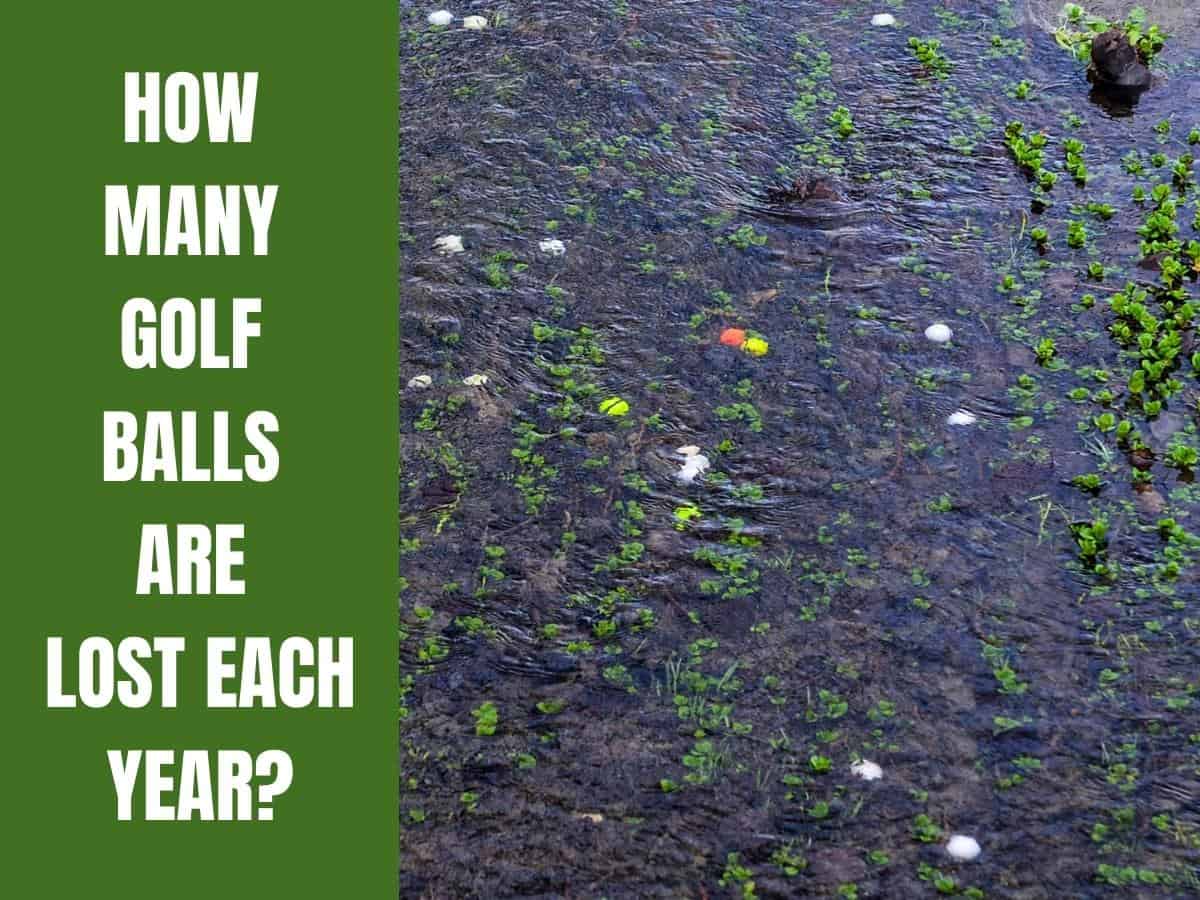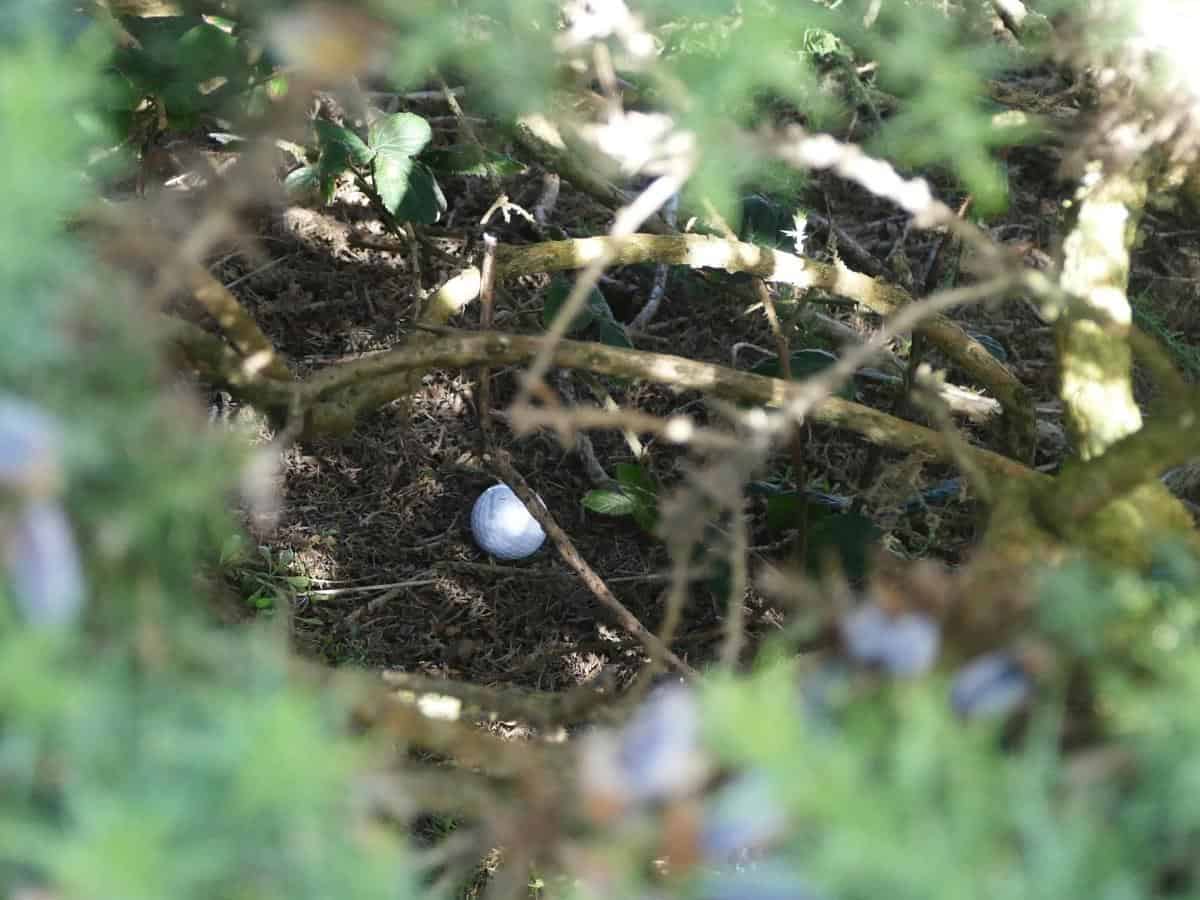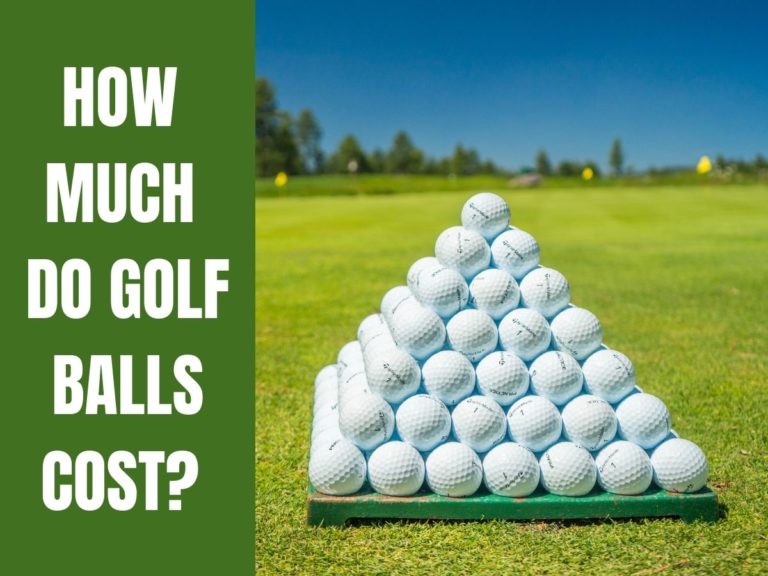How Many Golf Balls Are Lost Each Year?
The golf ball industry is a juggernaut, with brands like Titleist churning out about 1 million golf balls per day! And why do they need to produce so many? Because losing golf balls is a global pandemic!
300 million golf balls are lost every year in the US alone. The global number of golf balls lost in a year could easily be double or more at around 600 million when you consider that there are 66 million golfers globally, and most of them play at a 16 handicap or worse.
That is a staggering number of golf balls that find their way into the ponds, lakes, oceans, and rough over the golf season. That translates to every golfer losing 1-2 balls per round in the US. Does that statistic resonate? How many do you lose in a round?

How Many Golf Balls Are Produced Every Year
The sheer volume of golf balls made every year is mind-numbingly huge. Around 1.2 BILLION golf balls are produced annually. Based on estimates, that amount would cover double the number of golf balls lost worldwide in 12 months.
That alone should motivate you to improve and focus on reducing your ‘urethane’ footprint with the same enthusiasm you do for your carbon footprint. Not to mention the cost of resupplying yourself with balls every few weeks.
Lost Golf Balls Pose An Environmental Hazard
The problem with modern golf balls is that they are not environmentally friendly. Depending on the materials used, a golf ball could take between 100 and 1000 years to decompose.
That means there are a lot of lost golf balls lying at the bottom of water hazards, slowly decomposing, and leaking hazardous materials into the surrounding environment.
A sonar survey done in 2009 of Loch Ness in Scotland showed an estimated 100,000 lost golf balls lying at the bottom of the loch. But, you may ask, there are no golf courses around Loch Ness?
And indeed, you would be correct. However, the local players like using the famous landmark as a driving range. Wonder how Nessie feels about that!
The Recycled Golf Ball Industry
At most clubs worldwide, whether formally at the pro-shop or informally, the trade-in of recycled golf balls is a thriving industry. These balls are commonly known as ‘lake balls.’ Technically, the golf balls aren’t recycled; instead, they are found, cleaned up, and sold to golfers at a lower price.
Online you can buy golf balls for $5 or less if you buy in bulk, and frankly, if you play at the high 80’s and over, using recycled balls will not make any significant difference in your game.
Losing a few yards here and there at the higher handicap levels will not make any real difference, and that will also help reduce the number of golf balls produced annually slowly.
The issue is ego, as there is nothing better than opening up a box of brand new golf balls and then hooking the first one off the tee to hell and gone, adding your contribution to the lost golf ball universe.
The informal sellers often wade into the ponds, search the rough for lost golf balls, then spend time cleaning them and getting them ready for resale – so why not support them and buy a few.
Plus, you could get some fantastic deals on premium balls too.

Using Recycled Balls Saves You Money
Buying used golf balls, especially the good quality ones like Pro V’s, Chrome Soft, Z-Stars, and others, will save you a lot of money, as you are paying $1 or less for a ball that costs $5 to start with.
Read more: Why Are Golf Balls So Expensive?
Where balls are damaged and not usable, then avoid them by all means, but if they look in reasonable condition, use them for play and see if you can finish your round with the same ball you started with.
If you consider that a dozen recycled balls could sell for between $10 and $18 vs. the $50 for new balls, the economics makes total sense. So, how much could you save in reality?
How Much Money Could You Save Using Recycled Golf Balls?
For this discussion, let’s assume the following. You play at least one round per week and lose two golf balls per round. That’s eight balls a month and adding in rounds where you lose a few more, let’s say 100 balls per year.
Using premium prices at $4 per ball or $48 per dozen vs. $1.20 for a good recycled ball. While this is a basic example, the numbers don’t lie. $400 per year on golf balls vs. $120 per year.
That’s $280 over a golf season saved, and for that, you can buy a driver, a set of wedges, or even a GPS watch or rangefinder. All that just by opting for recycled golf balls.
Reality check here. Most players shooting in the mid ’90s and around 100 will lose two golf balls per nine holes or more, which will at minimum double the costs and be more than $500 saved in a golf season.
Bet that got your attention didn’t it? What could you use an extra $500 for?
Unless you are playing in the low teen, say sub 14 handicap, using good recycled golf balls is well worth it for both your wallet and the environment, and there is no shame in it at all. Some players thrive on grabbing a great deal on bulk recycled golf balls.

How Do You Lose Fewer Golf Balls When You Play?
- Use colored balls. Although golf balls are usually white, some say colored balls are easier to see in flight and find in the rough or spot in shallow water hazards. I find yellow ones the easiest to track in poor visibility, such as rain. And remember, professional tennis players switched to yellow balls for the same reason years ago.
- Use balls in good condition. A clean golf ball with no cuts or tears will always ‘fly’ better. A gentleman I know always hit an old bashed-up ball when he had to play over water. So, I asked him why? He said that if he lost the ball in the water, it was only an old ball, so it didn’t matter apart from dropping a shot! When I told him that a ball in a better condition had more chance of clearing the hazard even if he didn’t quite strike it correctly, he soon changed his mind.
- Watch the ball land even on the bad shots. This is a common habit with golfers when they hit it offline; turning away in disgust takes your eyes off the ball, and when you look back, you don’t know where it landed.
- If you’re playing in a group, keep your eyes on each other’s golf balls. By doing this, you will find more and lose less.
- Compensate for your misses. If you know you slice or hook, aim the ball accordingly, so if you do mis-hit it, there is a better chance of finding it.
Final Thoughts
Changing your mind about recycled golf balls will not only save you money, but you won’t feel as bad about losing a $1 ball vs. losing a $5 ball. Plus, you get to do your bit for the environment as well.
So, when your golf ball stock is running a little low, have a look online or take a dozen recycled balls from your pro shop, and you can take that extra cash and use it on the 19th instead.
Related Posts You May Like:






